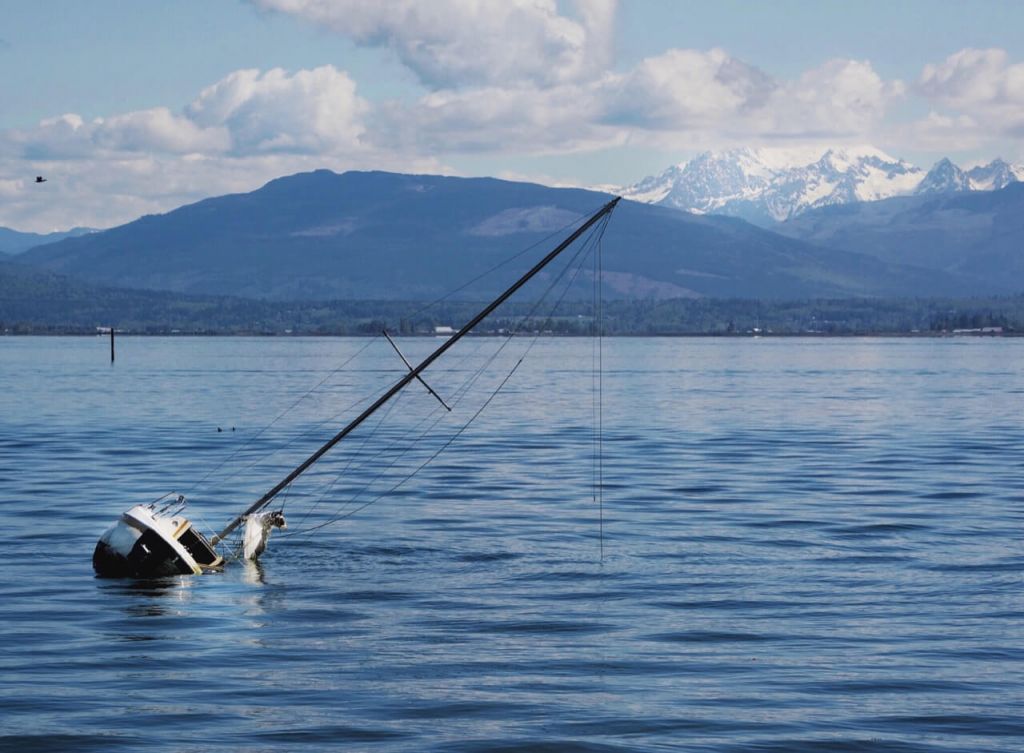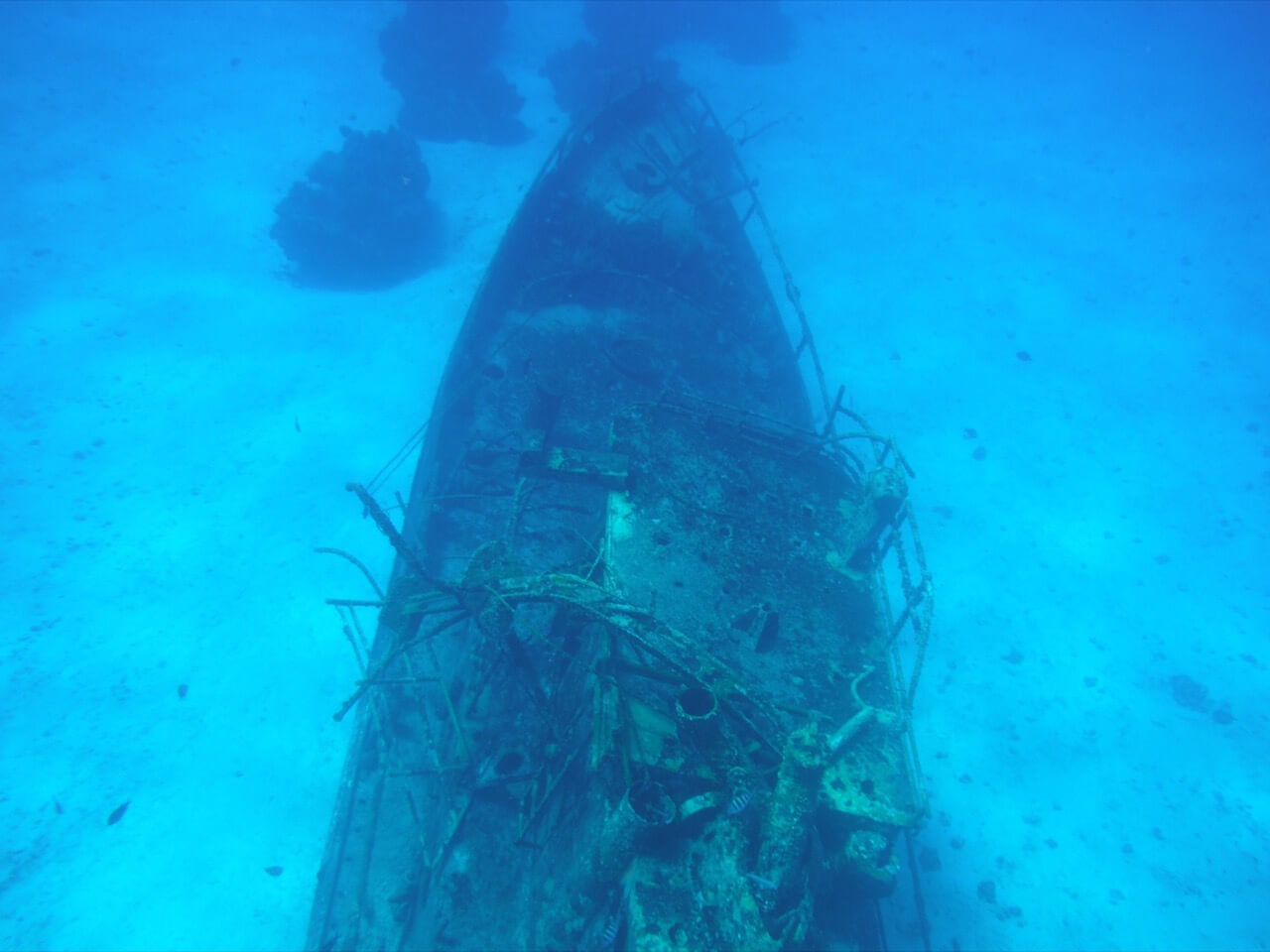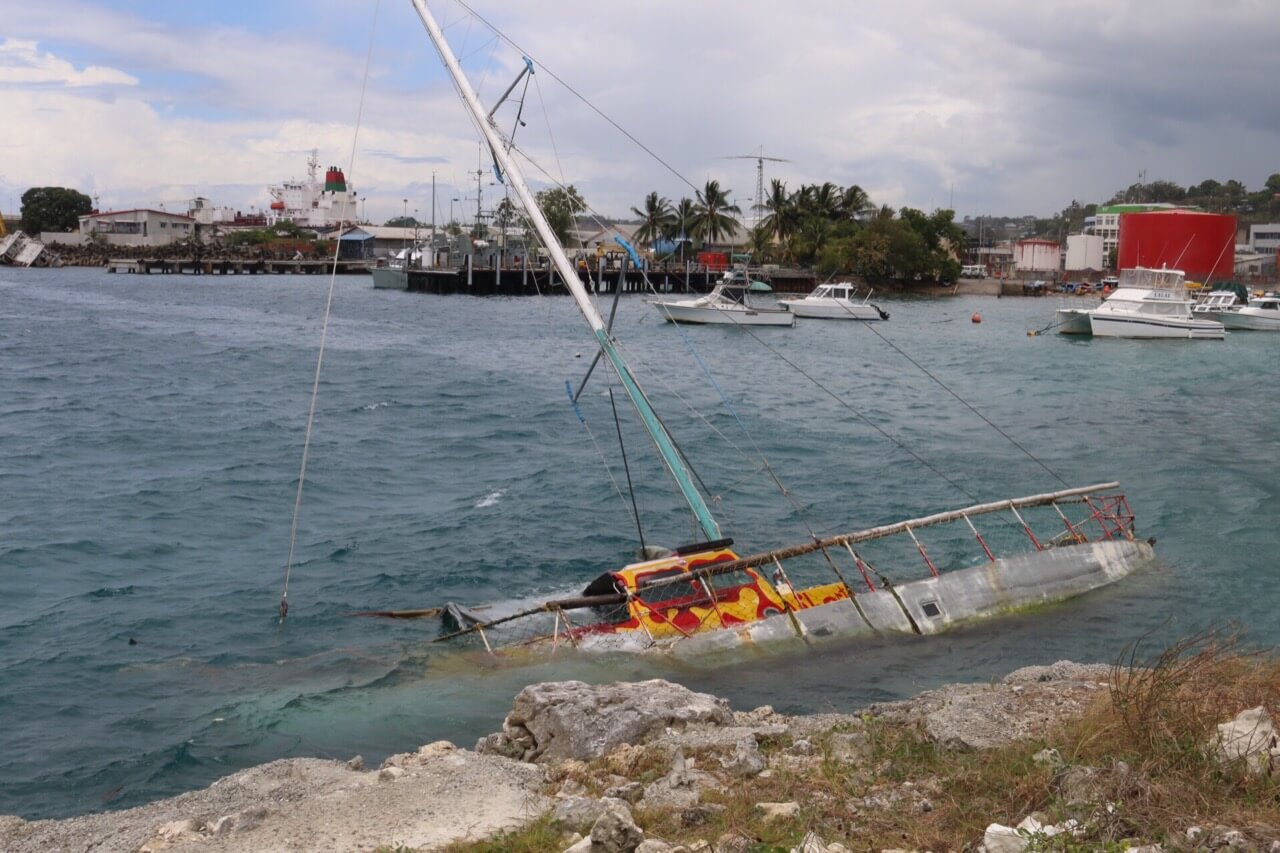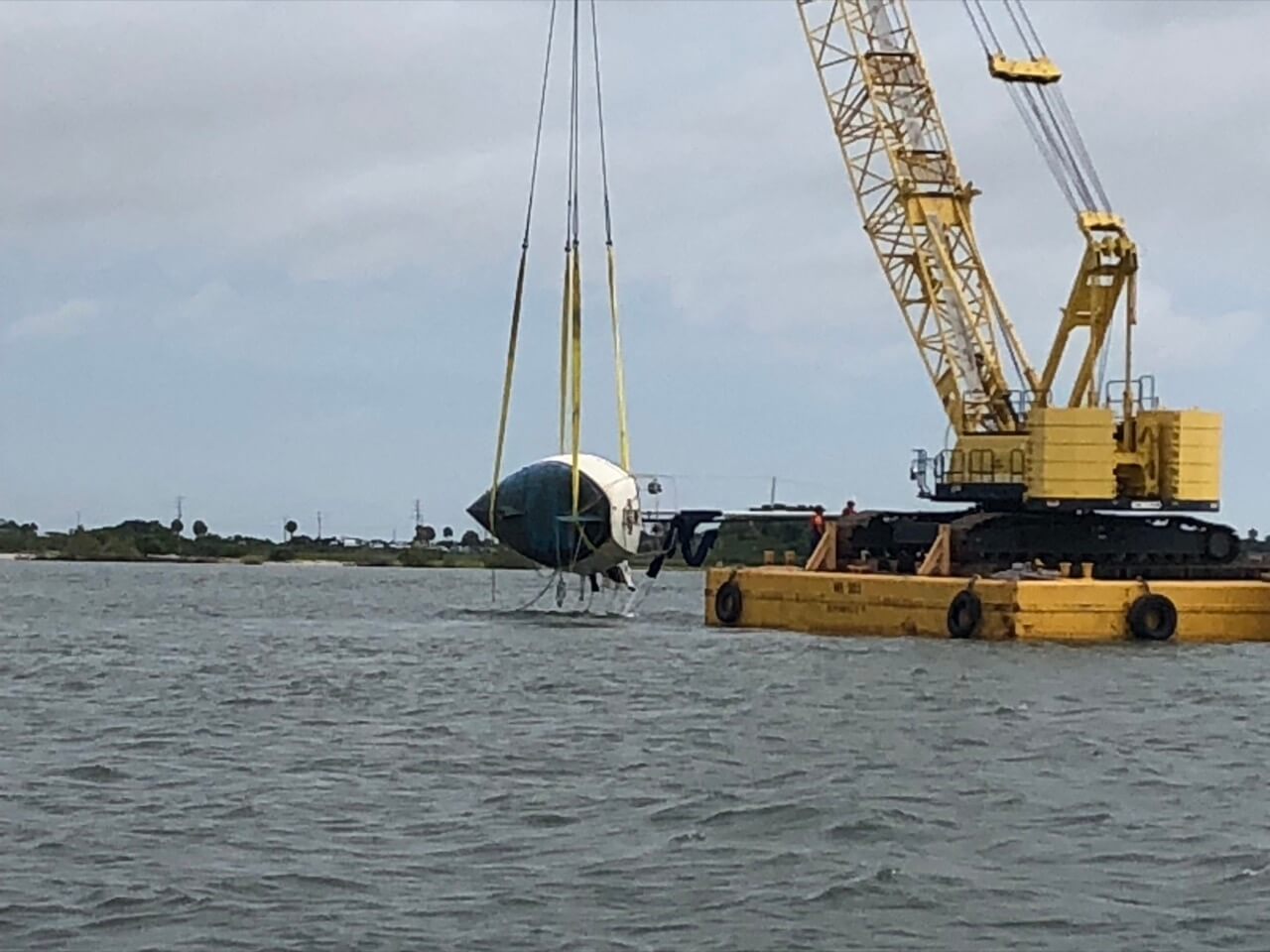The Average Recovery Cost of a Sunken Boat
It pains me to write about such a sad topic. But it has to be done. So without further ado, here goes an article about the average recovery cost of a sunken boat. Get your hands on some tissues and get reading.
So how much does it cost to recover a sunken boat?
- Hiring a salvaging company costs between $3,500 - $7,000, depending on the length of the boat. It's expensive but risk-free.
- Doing it yourself will cost between $500 - $1,500 - at the risk of damaging the boat, the equipment, or yourself.
Pricey stuff, I know. If you want to get even sadder, read on. I have plenty of tear-worthy material for you.

Whether this was the fault of you or the weather, the boat you love is now firmly set on the bottom of the ocean, sea or a lake. Let's recover it.
First things first - by recovery I mean lifting the boat up from underwater into a position that will make it possible to work on fixing it. What happens beyond that is a matter for another article. The fixing cost itself can't really be estimated since that varies widely depending on the extent of the damage.
Let's get to it.
Leave It In There?
What? Alright, let's get this out of the way first. I don't judge, I get it, you are considering letting the boat be. Maybe the recovery costs listed above wouldn't make sense when compared with what you'd pay for a new boat, maybe they would but you don't have the funds, whatever the case, you are thinking about letting nature take care of it.
Now while you would be creating an artificial reef which is something the water fauna and flora would benefit from, make sure that upon sinking, the boat didn't become a navigational hazard. In that case please do something about it, or the authorities will. Who would pay for that in the latter case depends on the laws of the specific country.
Also, a fully functional boat that has suddenly sunk might be leaking diesel or motor oil, or, God forbid, the extra virgin olive oil you had in your onboard kitchen.
So if you decide to contribute to the shipwrecks collection, make sure this fine addition doesn't pose any danger to both nature and your fellow humans.

Pro or DIY recovery?
Given the price, you might be tempted to save money by going at it DIY style, but unless you are brave or have done this before, more likely than not, you will have to hire professionals to do it for you.
The Pro Way
If you decide to leave it to the professionals, expect to pay about 3 500 USD per day of work, with this task needing one to two days to finish. With a few extra dollars added on top to be sure, you are easily looking at a 5.000 - 10 000 dollar expense. It is not possible to give you a more precise estimate since this varies situation by situation - that is why you will rarely find quotes on the webpages of boat salvage companies. There are simply too many variables, such as depth, location, distance from shore, size of the boat, seabed material, that influence the price.
As an industry professional from Tampa said about premature quotes, especially when it comes to companies that have a per-foot price list: 'How can a 21’ boat upside down in its slip be the same (per foot) cost as a 21’ boat hanging from its dock lines with the transom submerged?' Fair point.
So since I can't give you more precise money information, let's analyze the above estimate and look at some tips about how to make that sum as small as possible.
Why is it so expensive?
First of all, why so much money? Well, you are paying for a floating crane, operator, divers (in some US states there have to be two by law), liftbags, pumps and a few people to work with all of this. That can get costly.
Also, as an owner of a company that makes its living through marine construction and lifting sunken boats told me, get the cost signed before the job is done, not after. Since there are many things that can go wrong, a verbally stated estimate in the morning can double before the evening comes.

Don't bargain afterwards
The same man also told me not to bargain once the job is done. When you see the equipment the salvagers bring, you might come to think that if you rented these things yourself, you would be saving money. While this is possibly true on paper, you are not necessarily paying merely for what the company does, but also for what the company knows. The know-how here is a big part of what you are purchasing.
Why? As suggested, there are things that can go wrong and the professionals know about these risks. So, for instance, the suction power of a muddy seabed from which a boat is being lifted can easily drag in a diver if they don't stay far enough. Or, if you fasten the liftbags at the wrong places, you can tear things off of your boat. Also, if you miscalculate the balance of a boat before you secure the liftbags in place, it can easily end up the wrong way up, or slide out midway and hit the seafloor once again. I encourage you to read 'The Fall and Rise of Duck', a story about a DIY salvage that in the end worked out but took much more time and energy than originally anticipated.
The Do It Yourself Route
Now that I have scared you from doing it yourself, let me tell you how to do it yourself. Disclaimer - if you go down this path, you might be saving money, but you won't be saving your time or your nerves.
Then again, this might be one of the most fun DIY projects you will ever have undertaken in your life.
Floating Crane
The simplest of course is employing the services of a floating crane but that is not really a DIY solution since you will likely need an operator to go with it. It is also not the cheapest option.

Ping Pong Balls
You might have seen the Mythbusters episode where Jamie and Adam try to lift a boat from the bottom of the sea using tens of thousands of ping pong balls.
The goal here is quite intuitive - raise the buoyancy of the boat by filling it with air. That being said, filling the boat with floating elements from the inside can rip the salon roof off; remember that a lifting force of several tons would be exerted on it.
Liftbags
Let's move on to the obvious and popular choice - liftbags. Firstly, the cost - a 1000 kg (2200 lbs) liftbag can be rented for around 35 USD per day. A hydraulic pump will cost you around 70 USD per day and a 200 PSI air compressor will set you back some 100 USD per day. The total cost then can be between 500 and 1000 USD per day of work on an averagely sized boat.
Add the cost of diving equipment and divers, unless you can do this yourself, possibly paying a few people to help you as well as getting your hands on an extra boat that will stand by. Also, you will likely need some tarp to temporarily fix the hull damage, if there is one. All in all, with all the rest of the equipment like ropes and hoses included, the total cost shouldn't exceed 1500 USD per day. And if you are lucky, it might just cost you a few rounds of beer for the members of the local marina or a diving club that happens to have this equipment.
How To
You will need a boat that you should put downwind from the sunken vessel. After that, dive down and attach the liftbags to the boat. You don't want to attach them to cleats or rigging if you are using large liftbags - rather run a few strong belts under the boat and attach the liftbags to each of their ends. Use a few smaller liftbags attached to the rigging or cleats for stability. If there are holes in the hull, try to temporarily patch them up with a tarp. Then start filling the liftbags with air using the air compressor. Once the boat floats just below the water surface, start pumping the water out from it. And up it goes, voila, done. Then just tow it to the shore for further repairs.
Of course in the end it won't be as easy as that, but you already know that. Do plenty of research, watch videos, read the aforementioned Duck article. Get as much know-how as you can prior to the operation. And once you go for it, make a video and send me a link. This kind of stuff gets a lot of hits on YouTube. Good luck!
Did you find the answer to your specific question?
👍 3 👎 1
Comments
Thomas Clarence
You made an interesting point when you talked about how professionals know the risks that come with marine salvage. I would imagine that marine salvage would be really important when a commercial boat has an accident and sinks. It would be important to make sure that much of the products on the boat can be saved so that is where salvage can come in. http://www.ausbarge.com/our-services/
Michaela Hemsley
Thanks for mentioning that DIY salvage may save you money, but it won’t help your nerves or save you time. I think that would be something best left to the professionals because it could help make sure that everything was done safely and correctly. That would probably help make sure that everyone could be less stressed out and that the end result would be better for everyone involved too. https://www.gpmarine.com.au/moorings/
Leave a comment